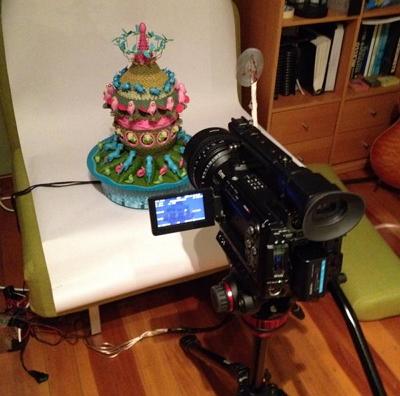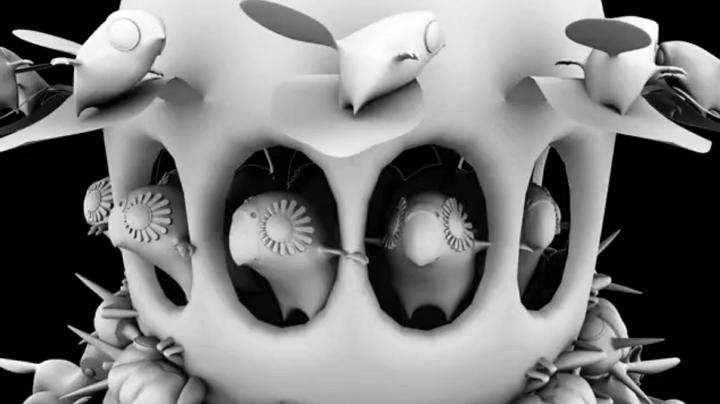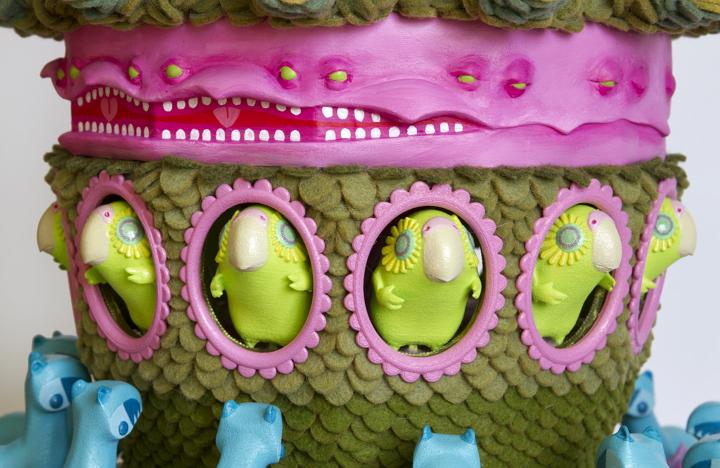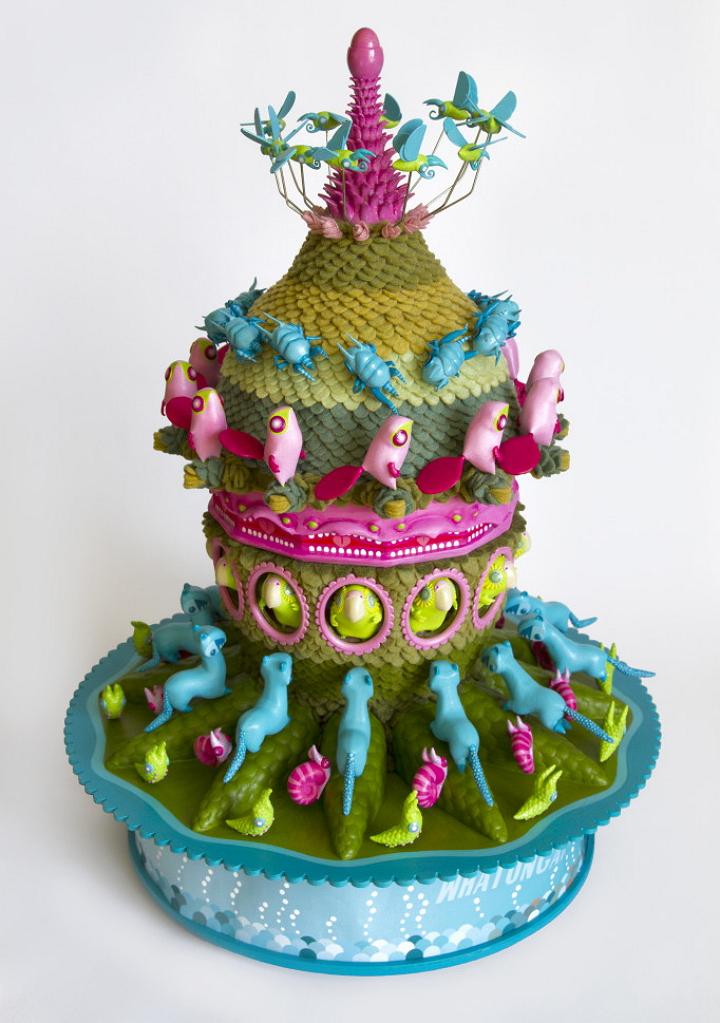 William Horner called it a Daedalum – the Wheel of the Devil – and it was largely forgotten by the time William F. Lincoln brought the concept back and renamed it the ‘zoetrope,’ or ‘wheel of life.’
William Horner called it a Daedalum – the Wheel of the Devil – and it was largely forgotten by the time William F. Lincoln brought the concept back and renamed it the ‘zoetrope,’ or ‘wheel of life.’
A zoetrope is an optical toy that uses the persistence of motion principle to create an illusion of motion using a simple drum, which spins on a central axis. Making use of a series images, the drum is spun. The faster the rate of spin, the smoother the progression of images becomes and a viewer can look through the wall of the zoetrope to see a rapid progression of images which appear animated.
Recently, artists and designers have used 3D printing to build the images they use to create their modern take on the classic zoetrope, and multidisciplinary designer Tanya Marriott is among this latest wave.
Marriott, of New Zealand, works in a variety of media including interactive design, character and toy design, film, and animation. She sees 3D printing as an opportunity to tell stories and bridge the gap between digital and tangible realities.
She’s primarily a teacher of animation, play, and game design and the President of the National Institute of American Doll Artists, a Senior Lecturer in Design at the College of Creative Arts, Massey University, and a Director for Creative Collective Marmalade Monkey, and Marriott has also spent the last 20 years making dolls. Her background in industrial design, interaction design, and illustration led her to 3D printing.
 This zoetrope Marriott dubbed the Kakatrope was made for the Pictoplasma All-Stars show and exhibited at Urban Spree in Berlin, and the artist says it was meant to explore animation technique not confined to the screen using elements of immersive storytelling.
This zoetrope Marriott dubbed the Kakatrope was made for the Pictoplasma All-Stars show and exhibited at Urban Spree in Berlin, and the artist says it was meant to explore animation technique not confined to the screen using elements of immersive storytelling.
“Modern 3D printing technology has enabled a resurgence in the use of the Zoetrope as an animation tool,” Marriott says. “The ability to represent 3D space virtually within the design development process has enabled a high level of complexity within animation technique and narrative conveyance to emerge. Diversity within 3D printer capable materials has also enabled a rich exploration into the tactile and tonal qualities of materiality, and how this can lend ‘magic’ and depth to the movement.”
She says the Kakatrope is an homage to ecologist Richard Henry, the man responsible for the establishment of the first offshore wildlife reserve. It features an interwoven, tiered character narrative, which represents the theme of wildlife predation on an island. According to Marriott, it depicts “the spiritual intervention of mankind as an advocate for endangered species, primarily the Kakapo.”
“Designed and manufactured using digital technology,” she notes, “the sculpture demonstrates both innovative modes of digital fabrication through 3D printing, and the ability for object animation to engage the audience.”
The Kakatrope has been exhibited at the Pictoplasma Conference 2015 and the 6th Annual PopCAANZ Conference Virtual Pop show in Wellington, NZ.
What do you think of Tanya Marriott’s 3D printed zoetrope? Let us know in the 3D Printed Kakatrope forum thread on 3DPB.com. Check out a video of the Kakatrope spinning, as well as more photos, below.
Subscribe to Our Email Newsletter
Stay up-to-date on all the latest news from the 3D printing industry and receive information and offers from third party vendors.
Print Services
Upload your 3D Models and get them printed quickly and efficiently.
You May Also Like
3D Printing News Briefs, July 2, 2025: Copper Alloys, Defense Manufacturing, & More
We’re starting off with metals in today’s 3D Printing News Briefs, as Farsoon has unveiled a large-scale AM solution for copper alloys, and Meltio used its wire-laser metal solution to...
3DPOD 260: John Hart on VulcanForms, MIT, Desktop Metal and More
John Hart is a Professor at MIT; he´s also the director of the Laboratory for Manufacturing and Productivity as well as the director of the Center for Advanced Production Technologies....
3D Printing News Briefs, June 28, 2025: Defense Accelerator, Surgical Models, & More
In this weekend’s 3D Printing News Briefs, 3YOURMIND was selected to join an EU Defense Accelerator, and PTC has announced model-based definition (MBD) capabilities within Onshape. Finally, a study out...
EOS in India: AM’s Rising Star
EOS is doubling down on India. With a growing base of aerospace startups, new government policies, and a massive engineering workforce, India is quickly becoming one of the most important...






































